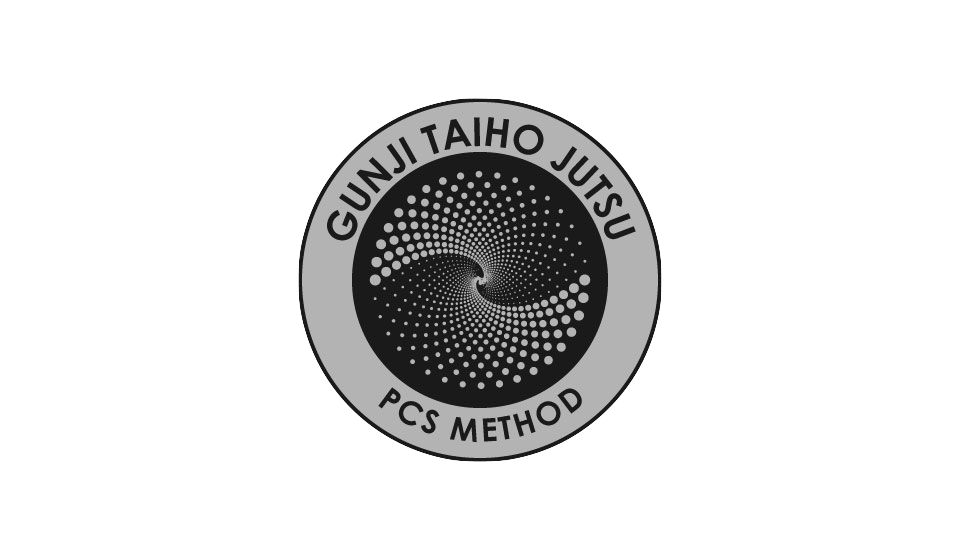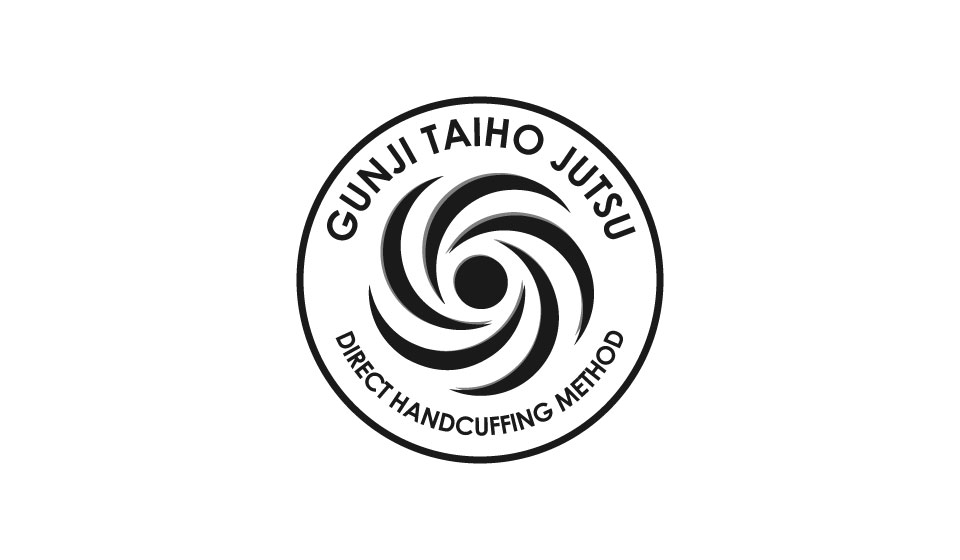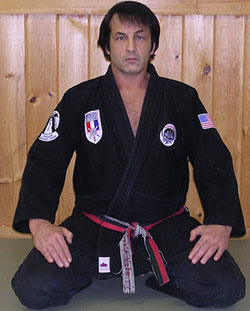Gunji Taiho Jutsu and the Roots of Creating the Little Circle Pin called Little Maru
Gunji Taiho Jutsu is a type system of Taiho Jutsu (Arresting Technique) that has roots in different cultures and Martial Arts styles. One goal of Gunji (Military) Taiho Jutsu was to act as a reformer to arresting technique. The facts are many Taiho Jutsu systems, if you even know what the word means, do not work under stress. Gunji Taiho Jutsu (GTJ) saw this issue as an opportunity to make changes. The first thing that we did was develop the governing strategy of PCS 1, PCS 2, and PCS 3. Having PCS as an operating system is an effective way to understand, see and apply arresting techniques. It gives that Military Personnel or Officer stages and objectives for reaching goals.
PCS 3 essentially means Pin, Safety, and Communication. With an effective pin, an Officer can apply cuffing techniques. In GTJ, we have handcuffing methodologies that we called GTJ Direct Handcuffing Method. This is a topic for a different day; however, GTJ Direct Handcuffing Methods will never be applied if you do not use PCS 1, PCS 2, and PCS 3. To return, PCS 3 = Pin the person, make sure you and this person in Safe, and lastly Communicate throughout PCS 1-3. 
GTJ Pins come from different systems of Jujutsu as mentioned earlier. One of them is Yoshitsune Jujutsu, and specifically Yoshitsune Combat Jujutsu as developed by Michael DePasquale Jr. The short history is Yoshitune Jujutsu comes from Hakko Ryu Jujutsu which in turn came from Daito-Ryu Aikijujutsu. As Depasquale writes (2014):
"Junji Saito, the founder of the Yoshitsune Jujutsu system, moved to the United States in 1960. He had been a reporter for a Japanese newspaper and was assigned to London, England some years prior to Lloyd George becoming prime minister of England. Saito after being disappointed with Kodokan Judo first trained with an 86 year old Jigen Ryu master who taught him their form of Jujutsu. He later trained with his long-time childhood friend, Ryuho Okuyama, the founder of Hakko Ryu and he eventually became the highest rank possible in that system, Shihan Menkyo Kaiden.

Saito Sensei can be described as being very small in stature, 5 feet tall, and very slender with a full head of white hair. Saito Sensei was not very strong looking, was very soft-spoken, and wore wire-framed glasses. This all added to his appearance and the impression one got when meeting him for the first time. Shihan DePasquale Sr. described Saito Sensei as having an ability far superior to anyone he had ever met, and that his ability was to teach was unsurpassed! He had a way about him to make people listen attentively and understand as he passed on his martial arts knowledge.
Soon after arriving in the United States Saito Sensei took all of his favorite techniques from the systems he had studied and combined them into a system that became known as Yoshitsune Jujutsu. His thought was these techniques were more suited to the larger physique and self-defense needs of Americans. In addition, Saito Sensei transmitted the Hepi Ryu system of Bo Jutsu at the Yoshitsune Dojo.
Michael DePasquale Sr. founded the Yoshitsune Dojo in 1961. He trained in and taught traditional, authentic Japanese Jujutsu for more than half a century, and was commissioned as Shihan ("master instructor") in Hakko Ryu Jujutsu by Soke Ryuho Okuyama of Omiya, Japan. DePasquale’s principal instructor for more than 26 years was Junji Saito, a Shihan Menkyo Kaiden (master instructor with all of the style's secrets). In 1964, Shihan DePasquale performed Jujutsu demonstrations at the Japanese Pavilion of the New York World's Fair.
Upon Junji Saito’s passing in 1988, Michael DePasquale Sr. became the headmaster of the Yoshitsune Jujutsu system. Shihan DePasquale is regarded by many to be the father of American Jujutsu who started his Jujutsu training in 1944 while a member of the CID Division in the US Army. He received numerous awards and distinctions during his lifetime including his induction into the Black Belt Hall of Fame, Jujutsu America’s Hall of Fame, and was the recipient of a Lifetime Achievement Award from Black Belt Magazine. 
He remained Yoshitsune Jujutsu’s headmaster until his passing in September 2006. His son, Michael DePasquale Jr. is now the Soke (headmaster) of the Traditional Yoshitsune Jujutsu system passed down by his father Michael DePasquale Sr. He is also Soke of the Yoshitsune Combat Jujutsu System. Michael Jr. started his training under his father’s guidance at the age of 6 and has been awarded numerous awards and distinctions as well, with over 60 different awards from members of his peers, Jujutsu America’s Hall of Fame, Battle of Atlanta Hall of Fame, Blue Grass Grand National Hall of Fame and many others. He has published 3 different magazines, his last one being Karate International Magazine, as well as 8 different books his first one being Simon and Schuster’s 1977 Monarch Illustrated Guide to Ju-Jitsu. He is to this day a sought out seminar leader teaching the Combat and Traditional Yoshitsune Jujutsu that was taught to him by his late father."
For GTJ there is a unique lineage for Japanese Ju jutsu/Ju Jitsu systems that can be observed as: Lineage Ju Jitsu From Japan: Takeda Sokaku (Daito-Ryu Aikijujutsu) > Okuyama Ryuho (Hakko Ryu- Jujutsu) > Junji Saito (Yoshitsune Jujutsu) > Michael DePasquale Senior (Yoshitsune Jujutsu) > Michael DePasquale Junior (Yoshitsune Combat Jujutsu & Yoshitsune Taiho Jutsu) > Tony Pacenski (Gunji Taiho Jutsu).

In the video above, what I call the little maru (Japanese for circle) turnover technique for Gunji Taiho Jutsu addresses a strategy on how to deal with a person that resists during a turnover. One common resistance is the person bending his straight arm. Use the little maru. This move is adapted from Hakko Ryu Jujitsu through Yoshitsune Jujutsu to our System of Taiho Jutsu: Gunji Taiho Jutsu (Military Arresting Technique). The goal is to establish an effective pin; however, first, the Officer needs to turn the person to his stomach. Little maru is just the trick needed to create the transition. So remember little maru the next time training Gunji Taiho Jutsu when you feel the resistance, and think of where the technique came from after reaching your objective.
To The Reader
The author will be most happy to receive your comments, including criticisms and suggestions. Noteworthy comments may be included in future editions or books on this series.
Reference and photo adaptation from, visit www.depasqualejujitsu.com
– Prof. “little” Tony Pacenski
Yokota Air Base – Tokyo Japan
Gunji Taiho Jutsu (GTJ) | Military Arresting Technique is a system of taiho jutsu that is a progressive way to teach Military or Law Enforcement personnel many of the traditional and contemporary jujutsu techniques of control and arrest while at the same time keeping mindful of secondary weapon systems during training and complementing all of the current and evolving Military Combatives programs in place for the different branches of the Military.

Admissions <<<Student


